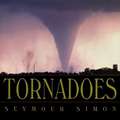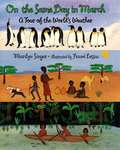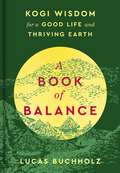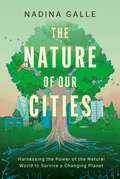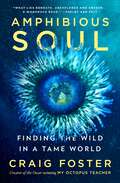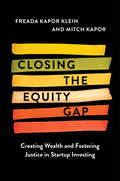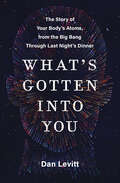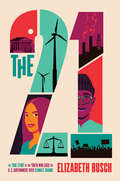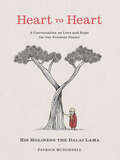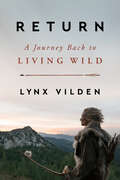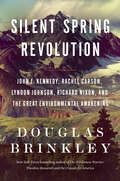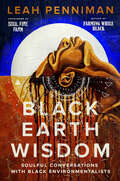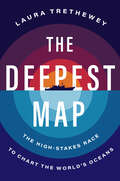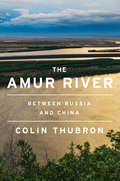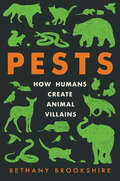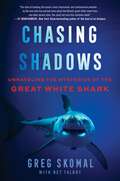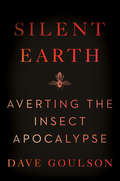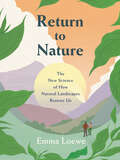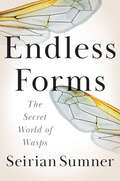- Table View
- List View
What Makes Day and Night
by Franklyn M. Branley"What Makes Day and Night" goes through the cycle of the earth and its revolutions around the sun.
Tornadoes
by Seymour SimonDescribes the location, nature, development, measurement, and destructive effects of tornadoes, as well as how to stay out of danger from them.
On The Same Day In March: A Tour Of The World's Weather
by Marilyn Singer Frané LessacOn the same day in March... Polar bears ride on Artic ice. People in French cafes turn up their faces to the sun. Hailstones roll over Indian hillsides. Rain makes a river in Kenya. On the same day that it's icy cold in the Artic, it's foggy in Louisiana, sunny in Barbados, and blowing wild winds called willy-willies in Austrailia. In this poetic exploration of longitude and weather, with bright and detailed paintings of seventeen different places, Marilyn Singer and Frane Lessac show us what's happening from the poles to the equator-- all on the same day in March. <P> Top 10 Science Books for Children 2000 (Booklist) and Notable Children's Trade Books in the Field of Social Studies 2001, National Council for SS & Child. Book Council
A Book of Balance: Kogi Wisdom for a Good Life and Thriving Earth
by Lucas BuchholzWe all need help centering ourselves to serve ourselves and our world. In this small, beautiful book, the Kogi—a remote and ancient tribe in the mountains of Colombia--offer their learnings. They pose nine thought-provoking questions to help us live harmoniously with the earth and in turn find happiness and purpose in every moment.“Just as we are both sitting here and talking, this is how we can live well. All of this you will write in the book.”—Mama Jose Gabriel, a spiritual guide of the Kogi tribe, to author Lucas BuchholzFor centuries, the Kogi have lived in seclusion in Colombia’s remote Sierra Nevadas, known as “the heart of the world.” But in recent years, concerned by the environmental degradation they have experienced in their villages and forests, a few emissaries from the tribe emerged to bring an urgent and loving message to the West—advice on how to live in harmony with the earth.Buchholz was invited to their home to receive and transcribe this message. A Book of Balance takes us on a journey into a startlingly beautiful landscape and into a sacred space: the traditional fireside circle held regularly by the tribe. In this circle, members consider key questions essential to their community.In this slim volume of spiritual introspection, they ask us to share in their practice, posing nine questions that focus our minds and hearts on who we are, who we can become.Throughout we hear the words of the Kogi elders, wisdom that offers revelations, inspiration, and direction for our everyday lives.A beautiful book to own, to share with friends, and discuss in community.
The Nature of Our Cities: Harnessing the Power of the Natural World to Survive a Changing Planet
by Nadina GalleIn the tradition of Elizabeth Kolbert and Michael Pollan, The Nature of Our Cities is a stirring exploration of how innovators from around the world are combining urban nature with emerging technologies, protecting the planet’s cities from the effects of climate change and safeguarding the health of their inhabitants.We live in an age when humanity spends 90% of its time indoors, yet the nature around us—especially in America’s cities—has never been more vital. This distancing from nature has sparked crises in mental health, longevity, and hope for the next generation, while also heightening the risks we face from historic floods, heatwaves, and wildfires. Indeed, embracing nature holds untapped potential to strengthen and fortify our cities, suburbs, and towns, providing solutions spanning flood preparation, wildfire management, and promoting longevity. As ecological engineer Dr. Nadina Galle shows in The Nature of Our Cities nature is our most critical infrastructure for tackling the climate crisis. It just needs a little help. A fellow at MIT’s Senseable City Lab and selected for Forbes’ 30 under 30 list, Galle is at the forefront of the growing movement to fuse nature and technology for urban resilience. In THE NATURE OF OUR CITIES, she embarks on a journey as fascinating as it is pressing, showing how scientists and citizens from around the world are harnessing emerging technologies to unlock the power of the natural world to save their cities, a phenomenon she calls the “Internet of Nature.” Traveling the globe, Galle examines how urban nature, long an afterthought for many, actually points the way toward a more sustainable future. She reveals how technology can help nature navigate this precarious moment with modern advances such as:Laser-mapping that identifies at-risk neighborhoods to fight deadly health disparitiesA.I.-powered robots that prevent wildfires from reaching urban areasIntelligent water gardens that protect cities from floods and hurricanesAdvanced sensors that achieve 99% tree survival in dry, hot summers Optimistic in spirit yet pragmatic in approach, Galle writes persuasively that the future of urban life depends on balancing the natural world with the technology that can help sustain it. By turns clear-eyed and lyrical, THE NATURE OF OUR CITIES marks the emergence of an invigorating, prescient new talent in nature writing.
Amphibious Soul: Finding the Wild in a Tame World
by Craig Foster“An important book that will transform how we think about being human. … that will inspire hope.”—Jane GoodallHow can we reclaim the soul-deepening wildness that grounds us and energizes us when so much of the modern world seems designed to tame us?In this thrilling memoir of a life spent exploring the most incredible places on Earth—from the Great African Seaforest to the crocodile lairs of the Okavango Delta—Craig Foster reveals how we can attend to the earthly beauty around us and deepen our love for all living things, whether we make our homes in the country, the city, or anywhere in between.Foster explores his struggles to remain present to life when a disconnection from nature and the demands of his professional life begin to deaden his senses. And his own reliance on nature’s rejuvenating spiritual power is put to the test when catastrophe strikes close to home.Foster’s lyrical, riveting Amphibious Soul draws on his decades of daily ocean dives, wisdom from Indigenous teachers, and leading-edge science.
Closing the Equity Gap: Creating Wealth and Fostering Justice in Startup Investing
by Freada Kapor Klein Mitchell KaporA social activist and an entrepreneur remake the future of investing and business, offering a win-win road map for creating wealth and addressing inequalities by investing in groundbreaking tech companies that defy assumptions from Silicon Valley to Wall Street.Companies backed by venture capital drive the U.S. economy, accounting for hundreds of billions of dollars in sales and profits. The problem is that most of the wealth created winds up enriching elites, while the businesses funded by venture capitalists widen economic inequality. Committed to doing things differently, tech venture capitalists Freada Kapor Klein and Mitch Kapor launched Kapor Capital to prove that investing in gap-closing startups—companies whose services or products close opportunity gaps for both communities of color and low-income communities—is good business. Over the past decade, they’ve broadened the definition of success to include profits and accountability for the impacts a business has on employees, communities, and the planet, helping to launch close to two hundred companies engaged in achieving social and economic justice while showing remarkable growth, with many valued in the hundreds of millions or billions of dollars.Like every VC firm, Kapor Capital has experienced high-profile blowups and total losses. But its investing principles have created a stunning new ecosystem of Black and Latinx entrepreneurs, CEOs, and investors, all devising innovative, effective solutions to address the most pernicious problems afflicting many of America’s poorest communities. In Closing the Equity Gap, Freada and Mitch share their core belief that all companies must make a positive impact and that the obstacles entrepreneurs overcome in life are a far better predictor of long-term success than the schools they attend or investment dollars they raise from friends and family. Using stories behind some of the most remarkable companies ever launched, they show that the standard investment model doesn’t work, how it can be fixed, and what the future could look like if more investors joined them.
What's Gotten Into You: The Story of Your Body's Atoms, from the Big Bang Through Last Night's Dinner
by Dan LevittFor readers of Bill Bryson, Neil deGrasse Tyson and Siddhartha Mukherjee, a wondrous, wildly ambitious, and vastly entertaining work of popular science that tells the awe-inspiring story of the elements that make up the human body, and how these building blocks of life travelled billions of miles and across billions of years to make us who we are.Every one of us contains a billion times more atoms than all the grains of sand in the earth’s deserts. If you weigh 150 pounds, you’ve got enough carbon to make 25 pounds of charcoal, enough salt to fill a saltshaker, enough chlorine to disinfect several backyard swimming pools, and enough iron to forge a 3-inch nail. But how did these elements combine to make us human? All matter—everything around us and within us—has an ultimate birthday: the day the universe was born. This informative, eye-opening, and eminently readable book is the story of our atoms’ long strange journey from the Big Bang to the creation of stars, through the assembly of Planet Earth, and the formation of life as we know it. It’s also the story of the scientists who made groundbreaking discoveries and unearthed extraordinary insights into the composition of life. Behind their unexpected findings were investigations marked by fierce rivalries, obsession, heartbreak, flashes of insight, and flukes of blind luck. Ultimately they’ve helped us understand the mystery of our existence: how a quadrillion atoms made of particles from the Big Bang now animate each of our cells.Shaped by the curious mind and bold vision of science and history documentarian Dan Levitt, this wondrous book is no less than the story of life itself.
Fossils Tell of Long Ago (Let's-Read-and-Find-Out Science 2)
by AlikiWhat is a fossil?Sometimes it's the imprint of an ancient leaf in a rock. Sometimes it's a woolly mammoth, frozen for thousands of years in the icy ground. Sometimes it's the skeleton of a stegosaurus that has turned to stone.A fossil is anything that has been preserved, one way or another, that tells about life on Earth. But you can make a fossil, too—something to be discovered a million years from now—and this book will tell you how.
Flash, Crash, Rumble, and Roll (Let's-Read-and-Find-Out Science 2)
by Dr. Franklyn M. BranleyRead and find out about what causes the flash, crash, rumble, and roll of thunderstorms in this colorfully illustrated nonfiction picture book.Did you know that lightning bolts can be over a mile long? Or that they may come from clouds that are ten miles high? Storms can be scary, but not if you know what causes them. Before the next thunderstorm, grab this book by the expert science team Franklyn Branley and True Kelley and learn all about thunderstorms.This is a clear and appealing science book for early elementary age kids, both at home and in the classroom. It's a Level 2 Let's-Read-and-Find-Out, which means the book explores more challenging concepts for children in the primary grades. The 100+ titles in this leading nonfiction series are:hands-on and visualacclaimed and trustedgreat for classroomsTop 10 reasons to love LRFOs:Entertain and educate at the same timeHave appealing, child-centered topicsDevelopmentally appropriate for emerging readersFocused; answering questions instead of using survey approachEmploy engaging picture book quality illustrationsUse simple charts and graphics to improve visual literacy skillsFeature hands-on activities to engage young scientistsMeet national science education standardsWritten/illustrated by award-winning authors/illustrators & vetted by an expert in the fieldOver 130 titles in print, meeting a wide range of kids' scientific interestsBooks in this series support the Common Core Learning Standards, Next Generation Science Standards, and the Science, Technology, Engineering, and Math (STEM) standards. Let's-Read-and-Find-Out is the winner of the American Association for the Advancement of Science/Subaru Science Books & Films Prize for Outstanding Science Series.
The Twenty-One: The True Story of the Youth Who Sued the U.S. Government Over Climate Change
by Elizabeth RuschCompelling and timely, award-winning author Elizabeth Rusch’s The Twenty-One tells the gripping inside story of the ongoing landmark federal climate change lawsuit, Juliana vs. United States of America. The Twenty-One is for readers of Christina Soontornvat’s All Thirteen, fans of Steve Sheinkin’s books, and anyone interested in the environment and climate change, as well as youth activism, politics and government, and the law. From severe flooding in Louisiana to wildfires in the Pacific Northwest to melting permafrost in Alaska, catastrophic climate events are occurring more frequently—and severely—than ever. And these events are having a direct impact on the lives (and futures) of young people and their families. In the ongoing landmark case Juliana vs. United States, twenty-one young plaintiffs claim that the government’s support of the fossil-fuel industry is actively contributing to climate change, and that all citizens have a constitutional right to a stable climate—especially children and young adults, because they cannot vote and will inherit the problems of the future.Elizabeth Rusch’s The Twenty-One is a gripping legal and environmental thriller that tells the story of twenty-one young people and their ongoing case against the U.S. government for denying their constitutional right to life and liberty. A rich, informative, and multifaceted read, The Twenty-One stars the young plaintiffs and their attorneys; illuminates the workings of the United States’s judicial system and the relationship between government, citizens’ rights, and the environment; and asks readers to think deeply about the future of our planet. Features extensive backmatter, including a timeline, glossary, call to action, additional resources, and photographs.
Heart to Heart: A Conversation on Love and Hope for Our Precious Planet
by Dalai Lama Patrick McDonnellFrom His Holiness the Dalai Lama and Mutt’s cartoonist and award-winning author Patrick McDonnell comes a powerful and timely gem of a book on how to heal our relationship with the planet and each other.At the Dalai Lama’s residence in Dharamsala, India, an unusual visitor has arrived. His Holiness interrupts his morning meditation to greet a troubled Giant Panda who has travelled many miles to see him. Welcoming him as a friend, His Holiness invites the Panda on a walk through a cedar forest. There in the shadow of the Himalayas, surrounded by beauty, they discuss matters great and small . . .With a galvanizing message about the future of our planet—text by His Holiness accompanied by McDonnell’s masterful illustrations—Heart to Heart calls for a Compassionate Revolution, reminding us that “we are indeed all members of a single family, sharing one little house.” Told with whimsy, wisdom, and warmth, this beautiful book is deceptively simple in its approach and all the more powerful for it, as it elegantly and decisively conveys a message of joy, hope and change.“There are only two days in the year that nothing can be done. One is called Yesterday, and one is called Tomorrow.”
Return: A Journey Back to Living Wild
by Lynx VildenIn this stunning memoir, beloved internationally acclaimed earth advocate chronicles her journey to reconnect with the earth, offering a model for how we all can nurture the wild around and inside ourselves.In 1991, twenty-four-year-old Lynx Vilden crawled out of a sweat lodge covered in mud, her face streaked with tears, and whispered a promise to the earth: “I will love you and cherish you, I will learn how to live and share what you teach me.” That promise became Vilden’s life purpose: to return to the ways of our oldest ancestors, to a simpler life, and to listen deeply to Earth and what she has to say. Over the next thirty years, Vilden’s mission would lead her far from the city streets and punk bands of London and Amsterdam where she was raised, on a long and winding journey spanning continents and seasons, and filled with indigenous wisdom, Stone Age hunting skills, and important lessons from nature.In this illuminating memoir, Vilden shares the joys that await all of us when we reconnect with the earth, when we recognize what has been lost, and understand what we gain by meaningfully returning to our roots and become rewilded. Return is a glimpse into her extraordinary world—from stories about mentoring Silicon Valley millennials at her Stone Age immersion in rural Washington State to adventures traveling among Sami reindeer herders in Arctic Sweden to detailing the intricacies of just how to pursue and survive a wild lifestyle inspired by Stone Age humans.This extraordinary debut ultimately invigorates our hunger to renew our bonds with the earth and awaken our wildest, most primal selves.
Silent Spring Revolution: John F. Kennedy, Rachel Carson, Lyndon Johnson, Richard Nixon, and the Great Environmental Awakening
by Douglas BrinkleyNew York Times bestselling author and acclaimed presidential historian Douglas Brinkley chronicles the rise of environmental activism during the Long Sixties (1960-1973), telling the story of an indomitable generation that saved the natural world under the leadership of John F. Kennedy, Lyndon Johnson, and Richard Nixon.With the detonation of the Trinity explosion in the New Mexico desert in 1945, the United States took control of Earth’s destiny for the first time. After the Truman administration dropped atomic bombs on Japan to end World War II, a grim new epoch had arrived. During the early Cold War years, the federal government routinely detonated nuclear devices in the Nevada desert and the Marshall Islands. Not only was nuclear fallout a public health menace, but entire ecosystems were contaminated with radioactive materials. During the 1950s, an unprecedented postwar economic boom took hold, with America becoming the world’s leading hyperindustrial and military giant. But with this historic prosperity came a heavy cost: oceans began to die, wilderness vanished, the insecticide DDT poisoned ecosystems, wildlife perished, and chronic smog blighted major cities. In Silent Spring Revolution, Douglas Brinkley pays tribute to those who combated the mauling of the natural world in the Long Sixties: Rachel Carson (a marine biologist and author), David Brower (director of the Sierra Club), Barry Commoner (an environmental justice advocate), Coretta Scott King (an antinuclear activist), Stewart Udall (the secretary of the interior), William O. Douglas (Supreme Court justice), Cesar Chavez (a labor organizer), and other crusaders are profiled with verve and insight. Carson’s book Silent Spring, published in 1962, depicted how detrimental DDT was to living creatures. The exposé launched an ecological revolution that inspired such landmark legislation as the Wilderness Act (1964), the Clean Air Acts (1963 and 1970), and the Endangered Species Acts (1966, 1969, and 1973). In intimate detail, Brinkley extrapolates on such epic events as the Donora (Pennsylvania) smog incident, JFK’s Limited Nuclear Test Ban Treaty, Great Lakes preservation, the Santa Barbara oil spill, and the first Earth Day.With the United States grappling with climate change and resource exhaustion, Douglas Brinkley’s meticulously researched and deftly written Silent Spring Revolution reminds us that a new generation of twenty-first-century environmentalists can save the planet from ruin.Silent Spring Revolution features two 8-page color photo inserts.
Black Earth Wisdom: Soulful Conversations with Black Environmentalists
by Leah PennimanA soulful collection of illuminating essays and interviews that explore Black people’s spiritual and scientific connection to the land, waters, and climate, curated by the acclaimed author of Farming While BlackAuthor of Farming While Black and co-founder of Soul Fire Farm, Leah Penniman reminds us that ecological humility is an intrinsic part of Black cultural heritage. While racial capitalism has attempted to sever our connection to the sacred earth for 400 years, Black people have long seen the land and water as family and understood the intrinsic value of nature.This thought-provoking anthology brings together today’s most respected and influential Black environmentalist voices —leaders who have cultivated the skill of listening to the Earth —to share the lessons they have learned. These varied and distinguished experts include Pulitzer Prize and National Book Award-winning author Alice Walker; the first Queen Mother and official spokesperson for the Gullah/Geechee Nation, Queen Quet; marine biologist, policy expert, and founder and president of Ocean Collectiv, Dr. Ayana Elizabeth Johnson; and the Executive Director of the North Carolina Association of Black Lawyers, Land Loss Prevention Project, Savi Horne. In Black Earth Wisdom, they address the essential connection between nature and our survival and how runaway consumption and corporate insatiability are harming the earth and every facet of American society, engendering racial violence, food apartheid, and climate injustice.Those whose skin is the color of soil are reviving their ancestral and ancient practice of listening to the earth for guidance. Penniman makes clear that the fight for racial and environmental justice demands that people put our planet first and defer to nature as our ultimate teacher.Contributors include:Alice Walker • adrienne maree brown • Dr. Ross Gay • Dr. Ayana Elizabeth Johnson • Rue Mapp • Dr. Carolyn Finney • Audrey Peterman • Awise Agbaye Wande Abimbola • Ibrahim Abdul-Matin • Kendra Pierre-Louis • Latria Graham • Dr. Lauret Savoy •Ira Wallace • Savi Horne • Dr. Claudia Ford • Dr. J. Drew Lanham • Dr. Leni Sorensen • Queen Quet • Toshi Reagon • Yeye Luisah Teish • Yonnette Fleming • Naima Penniman • Angelou Ezeilo • James Edward Mills • Teresa Baker • Pandora Thomas • Toi Scott • Aleya Fraser • Chris Bolden-Newsome • Dr. Joshua Bennett • B. Anderson • Chris Hill • Greg Watson • T. Morgan Dixon • Dr. Dorceta Taylor • Colette Pichon Battle • Dillon Bernard • Sharon Lavigne • Steve Curwood • and Babalawo Enroue Halfkenny
Animals in Winter (Let's-Read-and-Find-Out Science 1 #1)
by Henrietta Bancroft Richard G. Van GelderRead and find out about how animals cope with winter in this colorfully illustrated nonfiction picture book.This is a clear and appealing book for early elementary age kids, both at home and in the classroom. Introduce kids to basic science ideas as part of discussions about the seasons and animals.Have you ever seen a butterfly in the snow? Probably not. Butterflies can't survive cold weather, so when winter comes, many butterflies fly to warmer places. They migrate. Woodchucks don't like cold weather either, but they don't migrate; they hibernate. Woodchucks sleep in their dens all winter long. How do these and other animals handle the cold and snow of winter?Read and find out in the proven winner Animals in Winter!This is a Level 1 Let's-Read-and-Find-Out, which means the book explores introductory concepts perfect for children in the primary grades. The 100+ titles in this leading nonfiction series are:hands-on and visualacclaimed and trustedgreat for classroomsTop 10 reasons to love LRFOs:Entertain and educate at the same timeHave appealing, child-centered topicsDevelopmentally appropriate for emerging readersFocused; answering questions instead of using survey approachEmploy engaging picture book quality illustrationsUse simple charts and graphics to improve visual literacy skillsFeature hands-on activities to engage young scientistsMeet national science education standardsWritten/illustrated by award-winning authors/illustrators & vetted by an expert in the fieldOver 130 titles in print, meeting a wide range of kids' scientific interestsBooks in this series support the Common Core Learning Standards, Next Generation Science Standards, and the Science, Technology, Engineering, and Math (STEM) standards. Let's-Read-and-Find-Out is the winner of the American Association for the Advancement of Science/Subaru Science Books & Films Prize for Outstanding Science Series.
Why Frogs Are Wet (Let's-Read-and-Find-Out Science 2)
by Judy HawesRead and find out about frogs in this colorfully illustrated nonfiction picture book.Frogs can jump thirty times their own body length, catch insects on the wing, and breathe underwater or on land. But they must always keep their skins wet. Read and find out why! This is a clear and appealing science book for early elementary age kids, both at home and in the classroom. It's a Level 2 Let's-Read-and-Find-Out, which means the book explores more challenging concepts for children in the primary grades. The 100+ titles in this leading nonfiction series are:hands-on and visualacclaimed and trustedgreat for classroomsTop 10 reasons to love LRFOs:Entertain and educate at the same timeHave appealing, child-centered topicsDevelopmentally appropriate for emerging readersFocused; answering questions instead of using survey approachEmploy engaging picture book quality illustrationsUse simple charts and graphics to improve visual literacy skillsFeature hands-on activities to engage young scientistsMeet national science education standardsWritten/illustrated by award-winning authors/illustrators & vetted by an expert in the fieldOver 130 titles in print, meeting a wide range of kids' scientific interestsBooks in this series support the Common Core Learning Standards, Next Generation Science Standards, and the Science, Technology, Engineering, and Math (STEM) standards. Let's-Read-and-Find-Out is the winner of the American Association for the Advancement of Science/Subaru Science Books & Films Prize for Outstanding Science Series.
The Deepest Map: The High-Stakes Race to Chart the World's Oceans
by Laura TretheweyThe dramatic and action-packed story of the last mysterious place on earth—the world’s seafloor—and the deep-sea divers, ocean mappers, marine biologists, entrepreneurs, and adventurers involved in the historic push to chart it, as well as the opportunities, challenges, and perils this exploration holds now and for the future.Five oceans—the Atlantic, the Pacific, the Indian, the Arctic, and the Southern—cover approximately 70 percent of the earth. Yet we know little about what lies beneath them. By the early 2020s, less than twenty-five percent of the ocean’s floor has been charted, most close to shorelines, and over three quarters of the ocean lies in in what is called the Deep Sea, depths below a thousand meters. Now, the race is on to completely map the ocean’s floor by 2030—an epic project involving scientists, investors, militaries, and private explorers who are cooperating and competing to get an accurate reading of this vast terrain and understand its contours and environment. In The Deepest Map, Laura Trethewey documents this race to the bottom, following global efforts around the world, from crowdsourcing to advances in technology, recent scientific discoveries to tales of dangerous dives in untested and costly submersibles. The lure of ocean exploration has attracted many, including the likes of James Cameron, Richard Branson, Ray Dalio, and Eric Schmidt. The Deepest Map follows a cast of intriguing characters, from early mappers such as Marie Tharp, a woman working in the male-dominated fields of oceanography and geology whose discoveries have added significantly to our knowledge; Victor Vescovo, a man obsessed with reaching the deepest depths of each of the five oceans, and his young, brilliant, and fearless mapper Cassie Bongiovanni; and the diverse entrepreneurs looking to explore and exploit this uncharted territory and its resources.In The Deepest Map, ocean discovery converges with humanity's origin story; in mapping the ocean floor, scientists are actively tracing our roots back to the most inhospitable places on earth where life began—and flourished. But for every conservationist looking to protect the seafloor, there are others who see its commercial potential. Will a new map exacerbate pollution and the degradation of this natural resource? How will the race remake political power structures in years to come? Trethewey probes these questions as countries and conglomerates wrestle over the riches that may lie at the bottom of the sea.The future of humanity depends on our ability to protect this vast, precious, and often ignored resource. A true tale of science, nature, technology, and an extreme outdoor adventure The Deepest Map illuminates why we love—and fear—the earth’s final frontier and is a crucial addition to the increasingly urgent conversation about climate change.
The Amur River: Between Russia and China
by Colin ThubronThe most admired travel writer of our time—author of Shadow of the Silk Road and To a Mountain in Tibet—recounts an eye-opening, often perilous journey along a little known Far East Asian river that for over a thousand miles forms the highly contested border between Russia and China.The Amur River is almost unknown. Yet it is the tenth longest river in the world, rising in the Mongolian mountains and flowing through Siberia to the Pacific. For 1,100 miles it forms the tense border between Russia and China. Simmering with the memory of land-grabs and unequal treaties, this is the most densely fortified frontier on earth. In his eightieth year, Colin Thubron takes a dramatic journey from the Amur’s secret source to its giant mouth, covering almost 3,000 miles. Harassed by injury and by arrest from the local police, he makes his way along both the Russian and Chinese shores, starting out by Mongolian horse, then hitchhiking, sailing on poacher’s sloops or travelling the Trans-Siberian Express. Having revived his Russian and Mandarin, he talks to everyone he meets, from Chinese traders to Russian fishermen, from monks to indigenous peoples. By the time he reaches the river’s desolate end, where Russia’s nineteenth-century imperial dream petered out, a whole, pivotal world has come alive. The Amur River is a shining masterpiece by the acknowledged laureate of travel writing, an urgent lesson in history and the culmination of an astonishing career.
Pests: How Humans Create Animal Villains
by Bethany BrookshireAn engrossing and revealing study of why we deem certain animals “pests” and others not—from cats to rats, elephants to pigeons—and what this tells us about our own perceptions, beliefs, and actions, as well as our place in the natural worldA squirrel in the garden. A rat in the wall. A pigeon on the street. Humans have spent so much of our history drawing a hard line between human spaces and wild places. When animals pop up where we don’t expect or want them, we respond with fear, rage, or simple annoyance. It’s no longer an animal. It’s a pest.At the intersection of science, history, and narrative journalism, Pests is not a simple call to look closer at our urban ecosystem. It’s not a natural history of the animals we hate. Instead, this book is about us. It’s about what calling an animal a pest says about people, how we live, and what we want. It’s a story about human nature, and how we categorize the animals in our midst, including bears and coyotes, sparrows and snakes. Pet or pest? In many cases, it’s entirely a question of perspective.Bethany Brookshire’s deeply researched and entirely entertaining book will show readers what there is to venerate in vermin, and help them appreciate how these animals have clawed their way to success as we did everything we could to ensure their failure. In the process, we will learn how the pests that annoy us tell us far more about humanity than they do about the animals themselves.
Let's Go Rock Collecting (Let's-Read-and-Find-Out Science 2)
by Roma GansRead and find out about rocks and rock collecting in this colorfully illustrated nonfiction picture book.Readers follow two enthusiastic rock hounds around the globe as they add to their collection. Along the way they will learn how sedimentary, metamorphic, and igneous rocks are formed. From the Egyptian pyramids to Roman roads, from the diamond ring on a finger to the pebbles under your feet, rocks are everywhere! This is a Level 2 Let's-Read-and-Find-Out, which means the book explores more challenging concepts for children in the primary grades. The 100+ titles in this leading nonfiction series are:hands-on and visualacclaimed and trustedgreat for classroomsTop 10 reasons to love LRFOs:Entertain and educate at the same timeHave appealing, child-centered topicsDevelopmentally appropriate for emerging readersFocused; answering questions instead of using survey approachEmploy engaging picture book quality illustrationsUse simple charts and graphics to improve visual literacy skillsFeature hands-on activities to engage young scientistsMeet national science education standardsWritten/illustrated by award-winning authors/illustrators & vetted by an expert in the fieldOver 130 titles in print, meeting a wide range of kids' scientific interestsBooks in this series support the Common Core Learning Standards, Next Generation Science Standards, and the Science, Technology, Engineering, and Math (STEM) standards. Let's-Read-and-Find-Out is the winner of the American Association for the Advancement of Science/Subaru Science Books & Films Prize for Outstanding Science Series.
Chasing Shadows: My Life Tracking the Great White Shark
by Greg Skomal Ret Talbot“At last: the story of tracking the ocean’s most charismatic and controversial predator, compellingly told by the man who has learned more about the Atlantic great white shark than any other person alive. You must not miss this fantastic book!” —Sy Montgomery, New York Times bestselling author of The Soul of an OctopusDr. Greg Skomal, one of the leading great white shark experts in the country, reveals the true nature of these mysterious apex predators, as well as the fascinating story behind their history and startling resurgence With its quaint villages, local restaurants serving up lobster rolls, and miles and miles of warm, sandy beaches, Cape Cod, Massachusetts, is famous for being America’s carefree seaside getaway. But in August 2012, the first confirmed white shark attack in almost eighty years occurred in the region. As shark sightings quickly began to increase on Cape Cod and elsewhere, and large beachside billboards warning about the growing shark population became a common sight, a boogie boarder died after being attacked by a great white shark in Cape Cod’s shallow waters.What had changed to cause news of human-shark interactions to go from being a rarity to being the new normal? As some citizens called for shark culls, nets, drone surveillance, and other extreme solutions, interactions between local residents and scientists, politicians, and those responsible for public safety became tense and frantic.Dr. Greg Skomal, a shark biologist whose lifelong passion has been to gain a more refined understanding of great white sharks, was at the center of it all. This is the story of the great white shark’s return to the eastern seaboard, told through the life of the scientist who found himself in the oftentimes thankless position of having to balance conservation efforts and the drive to do important science with panic and fear in the court of public opinion. Greg has spent decades on a quest to tag, track, and demystify this animal, using every high- and low-tech method at his disposal, including those he invented, and he frequently comes face-to-face with these shadows of the deep. He leaves no stone unturned in his pursuit of the secrets behind the largely unknown lives of these charismatic creatures and in his duty to solve the intricate puzzle of how humans can coexist alongside them.Chasing Shadows is a too-rare conservation success story about restoring an apex predator to an ecosystem that provides a profound, new understanding of a beast so notoriously fierce that it’s nearly impossible to imagine how vulnerable it truly is.
Silent Earth: Averting the Insect Apocalypse
by Dave Goulson“A terrific book…A thoughtful explanation of how the dramatic decline of insect species and numbers poses a dire threat to all life on earth.” (Booklist, Starred Review)In the tradition of Rachel Carson’s groundbreaking environmental classic Silent Spring, an award-winning entomologist and conservationist explains the importance of insects to our survival, and offers a clarion call to avoid a looming ecological disaster of our own making.Drawing on thirty years of research, Goulson has written an accessible, fascinating, and important book that examines the evidence of an alarming drop in insect numbers around the world. “If we lose the insects, then everything is going to collapse,” he warned in a recent interview in the New York Times—beginning with humans’ food supply. The main cause of this decrease in insect populations is the indiscriminate use of chemical pesticides. Hence, Silent Earth’s nod to Rachel Carson’s classic Silent Spring which, when published in 1962, led to the global banning of DDT. This was a huge victory for science and ecological health at the time.Yet before long, new pesticides just as lethal as DDT were introduced, and today, humanity finds itself on the brink of a new crisis. What will happen when the bugs are all gone? Goulson explores the intrinsic connection between climate change, nature, wildlife, and the shrinking biodiversity and analyzes the harmful impact for the earth and its inhabitants. Meanwhile we have all read stories about hive collapse syndrome affecting honeybee colonies and the tragic decline of monarch butterflies in North America, and more. But it is not too late to arrest this decline, and Silent Earth should be the clarion call. Smart, eye-opening, and essential, Silent Earth is a forceful call to action to save our world, and ultimately, ourselves.Silent Earth includes approximately 20 black-and-white illustrations and charts and graphs.
Return to Nature: The New Science of How Natural Landscapes Restore Us
by Emma LoeweDiscover the new science and ancient wisdom on why nature makes us healthier and happier in body and soul from the co-author of The Spirit Almanac and mindbodygreen’s Senior Sustainability Editor.For centuries, we have known that getting outside is good for us. Yet we have become increasingly disconnected from the earth that nourishes us, with most of us spending 87% of our days indoors. In response, writer and environmentalist Emma Loewe demonstrates the power of nature’s healing properties in a guidebook organized by eight landscapes. In each chapter, you'll find research-backed ways to explore that landscape right now and protect it in the future, so that it can be healthy and nurturing for generations to come. Drawing off modern science and innate wisdom, she uncovers: Why being by the ocean makes you measurably happierHow living near greenery helps you lives longerThe staggering, illuminating statistic that forests can make you more relaxed within 90 seconds of walking among trees.Alongside beautiful four-color illustrations that inspire us all to get outside in big and small ways, this stunning book—more urgent than ever—will appeal to anyone looking to connect with the world around them, whether in their neighborhood park or on a backpacking getaway.
Endless Forms: The Secret World of Wasps
by Seirian Sumner“A book that draws us in to the strange beauty of what we so often run away from.” — Robin Ince, author of The Importance of Being InterestedIn this eye-opening and entertaining work of popular science in the spirit of The Mosquito, Entangled Life, and The Book of Eels, a leading behavioural ecologist transforms our understanding of wasps, exploring these much-maligned insects’ secret world, their incredible diversity and complex social lives, and revealing how they hold our fragile ecosystem in balance.Everyone worries about the collapse of bee populations. But what about wasps? Deemed the gangsters of the insect world, wasps are winged assassins with formidable stings. Conduits of Biblical punishment, provokers of fear and loathing, inspiration for horror movies: wasps are perhaps the most maligned insect on our planet. But do wasps deserve this reputation?Endless Forms opens our eyes to the highly complex and diverse world of wasps. Wasps are 100 million years older than bees; there are ten times more wasp species than there are bees. There are wasps that spend their entire lives sealed inside a fig; wasps that turn cockroaches into living zombies; wasps that live inside other wasps. There are wasps that build citadels that put our own societies to shame, marked by division of labor, rebellions and policing, monarchies, leadership contests, undertakers, police, negotiators, and social parasites. Wasps are nature’s most misunderstood insect: as predators and pollinators, they keep the planet’s ecological balance in check. Wasps are nature’s pest controllers; a world without wasps would be just as ecologically devastating as losing the bees, or beetles, or butterflies.Wasps are diverse and beautiful by every measure, and they are invaluable to planetary health, Professor Sumner reminds us; we’d do well to appreciate them as much as their cuter cousins, the bees.

